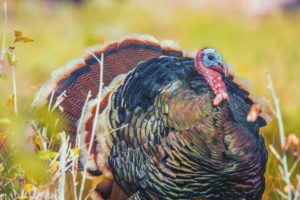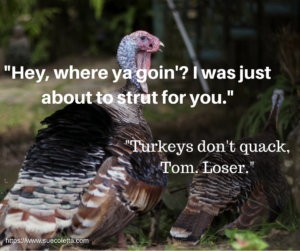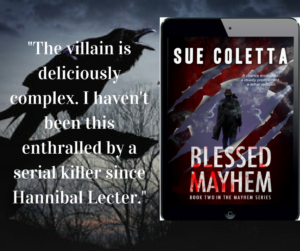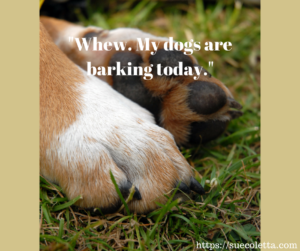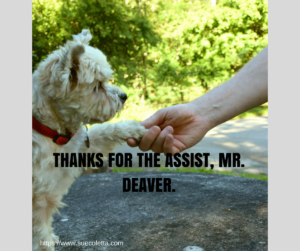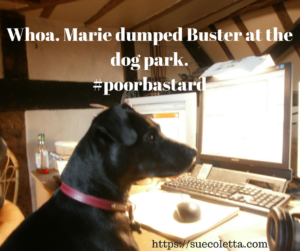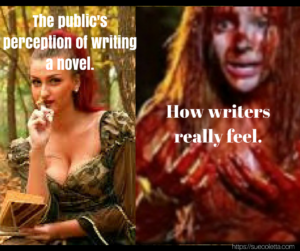By SUE COLETTA
 We have another brave writer who submitted their 1st page for critique. My suggestions will follow.
We have another brave writer who submitted their 1st page for critique. My suggestions will follow.
Title: Pinprick
RICHMOND, VIRGINIA
Rosa Gomez slammed the door behind her and stalked out onto her small front porch. She’d just seen the tattoo on her nephew Bernardo’s neck, and knew that if she stayed in the house she’d do something she’d regret. Mara Salvatrucha was scrawled in ink across the back of his sixteen year old skin. Mara Salvatrucha meant MS-13, the most vicious street gang in the Americas.
She collapsed into the rocking chair where she spent her evenings, rocking back and forth, glaring at the gang members who paraded past her bungalow. Her house was the last one in the neighborhood with a mowed lawn and a front light that hadn’t been shattered by gunfire. They’d demanded that she pay them money as recognition that they controlled the neighborhood, but she’d vowed to die before she paid them any tribute.
Most nights she sat with a shotgun on her lap, reminding the punks that they might control the neighborhood but they couldn’t control her.
She glared out into the darkness, her lower lip thrust forward, knowing that her defiance would be seen by the mareros. She’d been stubborn since the day she was born. Her father said he’d seen more of her lower lip than any other part of her body.
“Chamacas,” she shouts at the street. She’s calling them little girls, the way they said it in El Salvador. It wasn’t much to throw at them, but she’s so upset it’s all she can think of.
She collapsed back into her chair, rocking back and forth in the early November chill, settling into the rhythm that pumped blood into her arthritic knees.
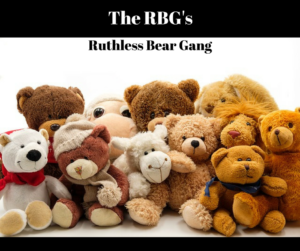
I like where you’re going with this, Anon. If done well, this could be a compelling storyline about a world many people don’t know a lot about. One word of caution: please portray the inner-workings of gang life and those affected by it in an accurate way, rather than basing your research on the stereotypes fueled by the media. I’m not saying you’ve done that here, just something to think about.
Big Picture
Why not show Rosa’s reaction when she first sees the tattoo? This is a big deal. Her nephew just joined a ruthless street gang, the same gang that’s harassed the neighborhood for years. SHOW us how he first told his aunt he’d jumped in. Did she see the tattoo by accident when he stripped off his shirt? Did he flaunt the tattoo in her face? Had he been covered in welts, cuts, and bruises days before this tattoo appeared? There’s your opening. Save what you have here for page 3 or 4.
First Lines
I’m a sucker for a great first line. It often takes me several rewrites till I’m satisfied, so I understand the struggle. A great first line accomplishes many things.
A first line should …
- Hook the reader
- Establish mood
- Give a sense of foreboding
- Reveal character and voice
- Hint at, or outright show, an obstacle
If the first line doesn’t grab the reader’s attention – Think: “Hey, pay attention!” — they may not read the sentence that follows. For writers who choose the traditional publishing model, here’s a hard truth. Agents and acquisition editors give each query 8 seconds, max. If the first line doesn’t grab them, you could drown in that slush pile.
Links for further study …
Jerry Jenkins broke down opening lines into four categories: surprise, dramatic statement, philosophical, and poetic. Find the post HERE.
Writer’s Digest gave us 7 Ways to Create a Killer First Line.
One of my favorite features on Writer Unboxed is Flog a Pro. Here, you can read numerous 1st pages from books that sit on the New York Times Bestsellers’ List. Skim 58 opening lines, and you’ll see why they’re so important. It’ll also help spark ideas for your story.
Point of View
You’re using a limited 3rd POV, which is fine if that’s your intention. However, deep POV has the ability to more closely bond the reader to the main character. Whether you write in 3rd or 1st doesn’t matter. The technique is the same. I hate to keep beating this particular drum, so for an in-depth look at deep POV read this 1st Page Critique.
Nitpicks
We use one space after a period, not two (or three, like you’ve done in a few places). This may seem petty, but details matter. You also have your tab set to an awkward spacing, which justified when I copied to the blog. The norm is .5.
Nitty Gritty
Rosa Gomez slammed the door behind her and stalked out onto her small front porch. (Strong action verbs form an excellent mental picture. Very good. However, try using a first line that delivers more of a punch.) She’d just seen the tattoo on her nephew Bernardo’s neck, and knew that if she stayed in the house she’d do something she’d regret. “Seen” and “knew” are telling words. Anytime you tell the reader what’s happened you rob them of the experience. The same sentence rewritten to show the action would look like this: After glimpsing the tattoo on her nephew’s neck (we don’t need to know his name yet), Rosa stormed out of the house before she crucified him. Sixteen years old and he’s marked for life.
Mara Salvatrucha was scrawled in ink across the back (isn’t the tattoo on his neck? Or do you mean the back of his neck? Be clear and concise. I had to scroll to the top to make sure I’d read “neck” the first time) of his sixteen-year-old skin. Too on-the-nose. See how I slipped in his age earlier? That’s one option. Another is to show through dialogue.
For example, when she confronts Bernardo, he could say, “I’m an adult. I can do what I want with my body.”
“But you’re only sixteen, Meho.”
Mara Salvatrucha meant MS-13, the most vicious street gang in the Americas. The explanation of MS-13 I’ll get to in a minute. In the meantime, America has no “s.” Perhaps you meant “United States”.
She collapsed into the rocking chair where she spent her most evenings, rocking back and forth, glaring at the gang members who paraded past her bungalow. Her house was the last one in the neighborhood with a mowed lawn and a front light that hadn’t been shattered by gunfire (the wording could be tighter, but I like that this shows Rosa doesn’t take any crap. She’ll make a fine hero for this story.) They’d demanded that she pay them money as recognition that they controlled the neighborhood, but she’d vowed to die before she paid them any tribute. Tribute’s an odd word choice. More importantly, you’re missing an excellent opportunity to sneak in a tidbit about Rosa’s background and/or show her personality. Example: She hadn’t scrubbed bedpans for forty years to fork over the cash to a bunch of gang-bangers. They’d have to kill her first.
Most nights she sat with a shotgun on her lap, reminding the punks that they might control the neighborhood but they couldn’t control her. Nicely done.
She glared out into the darkness, her lower lip thrust forward, knowing that her defiance would be seen by the mareros. The title of a street gang should be capitalized. “Knowing” is a telling word. You started to SHOW us the action, then pulled back. Rosa glared into the darkness with her lower lip thrust forward. Any minute now, the Mareros would catch wind of her defiance. She tapped her signet ring against the cool steel of her shotgun. Let them come. She’d been stubborn since the day she was born. Her father said he’d seen more of her lower lip than any other part of her body. The last two sentences are unnecessary backstory and all telling. SHOW these details later through dialogue and action.
“Chamacas,” she shouts at the street. She’s calling them little girls, the way they said it in El Salvador. It wasn’t much to throw at them, but she’s so upset it’s all she can think of. This paragraph slips into present tense … “shouts” should be “shouted”, etc. But it also raises a bigger, more important issue — the use of a foreign language. On one hand, we want to be authentic in our writing. On the other, we don’t want to have to explain. Or worse, risk confusing our reader. Some writing advice says to stick with English. Period. Or only throw in a foreign word (always italicized, btw) if the meaning is clear.
I like to take chances in my writing, so I didn’t heed this warning. In SCATHED, I included an old-school Italian grandmother, Mrs. Falanga. Like many Italian grandmothers (and I’m no exception), she’s very excitable and enthusiastic around children. Problem is, when she gets rolling she slides into mixing both dialects together. It’s also part of her charm, along with hand motions to accent her words. These mannerisms and speech enhance Mrs. Falanga’s character. To avoid her native tongue would destroy some of her endearing qualities. That said, she wasn’t an easy character to write. I can tell you how I handled using a foreign language, but we don’t have room for that today. I will, however, write a post about it in the near future. To be continued …
She collapsed back into her chair, rocking back and forth in the early November chill, settling into the rhythm that pumped blood into her arthritic knees. I like the mental image. Rosa reminds me of Clint Eastwood’s character in Gran Torino. We don’t necessarily need to know about Rosa’s arthritic knees, but if you choose to include it, then SHOW her knees aching. With the shotgun leveled in her lap, does she take a moment to massage one knee?
Overall, I like Rosa enough to turn the page. How ’bout you, TKZers? What advice would you give to strengthen this 1st page? Thanks to Anon for sharing his/her work. A public critique takes courage. Best of luck to you!

 Let’s be honest. Writing a book description isn’t fun. It’s grueling, mind-numbing work that I detest with every inch of my being. Mastering the art of back cover copy-writing is an important skill. Therefore, I’m always on the lookout for tips.
Let’s be honest. Writing a book description isn’t fun. It’s grueling, mind-numbing work that I detest with every inch of my being. Mastering the art of back cover copy-writing is an important skill. Therefore, I’m always on the lookout for tips.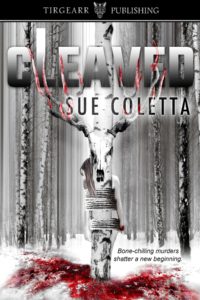

 I love writing pets into my stories. Not only is a great way to
I love writing pets into my stories. Not only is a great way to 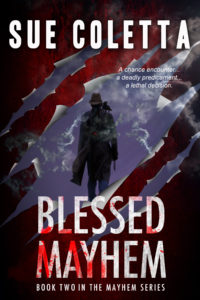
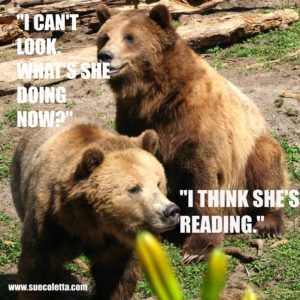 First, let’s define the word “muse.”
First, let’s define the word “muse.”
